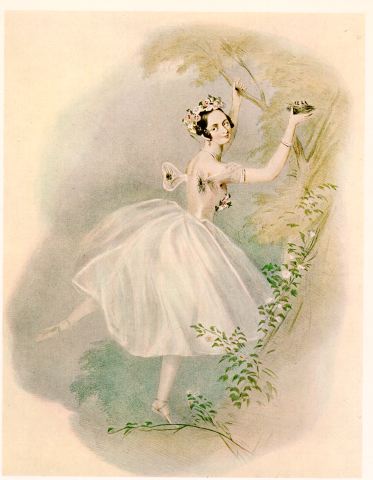Styles of Ballet: Romantic

Social Dancing – Which Style to Choose
February 6, 2020
Interviews with Freed of London’s Longest Running Pointe Shoe Makers – Part 1
February 20, 2020
Styles of Ballet: Romantic
Styles of Ballet: Romantic
As it’s Valentine’s Day soon, and love is in the air, we thought we’d dedicate this week’s blog to the Romantic ballet era itself!
The Romantic ballet era ran through the early 19th century, much of the choreography drew inspiration from art and literature during that time – meaning many of the ballet productions from that time are full of supernatural, otherworldly and fantasy type themes. Romantic ballets have a particular focus on pointe work, making the choreography notoriously challenging for the ballerina.
The stories often depicted ‘good and evil’ and ‘reality and mystic’, there was a strong supernatural atmosphere that ran throughout this era. The ballets would commonly have spirits, sorcerers, witches and villagers as characters, take La Sylphide for example, it’s a ballet based around a Scottish farmer that becomes infatuated with a mythical Sylph forest spirit.
La Sylphide was originally choreographed for Marie Taglioni - and a fun fact - Taglioni is thought to be one of the main reasons the ‘romantic tutu’ exists as she cut her skirt down so the audience could see her pointe work.
Giselle is another highly praised Romantic ballet, first performed by Carlotta Grisi, it is filled with love, deceit and otherworldly beings – although originally created in 1941, Giselle is still one of the most performed and masterful ballet productions to date.
Because of the prominent supernatural themes found in Romantic ballets, pointe work was perfect for the types of stories performed during this era. The way ballerinas were able to move on stage gave the illusion of floating and gliding – giving more character and personality to the ethereal and mystical beings they’re portraying.
The Romantic ballet period has truly stood the test of time – Happy Valentine’s Day Everyone!
To check out more about Romantic tutu’s, read our blog - Tutus
Click below to browse the Freed of London online store
Online Store
To keep up to date with any new and exciting news, follow us on:
Facebook
Twitter
Instagram

Pas-de-Quatre (1845) Carlotta Grisi, Marie Taglioni, Lucile Grahn and Fanny Cerito. Source: the Theatre Museum (Victoria & Albert Museum)

Margor Fonteyn in Les Sylphides

Marie Taglioni in La Sylphides



